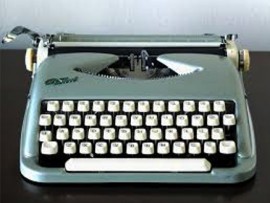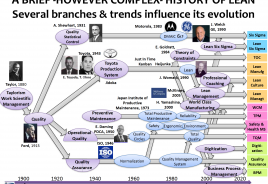Process vs. Technology in Productivity
For readers who don't recognize the item in the photo, this is a manual typewriter. For those that do recognize it, not only do I have a sense of your age, but I'm guessing it brings back some type of memory for you.
This is very similar to the machine I learned to type on in high school. The one I used had no labels on the keys, so I had to learn "home row" and how to type by "feel," not sight. The class I took focused on the process to ensure our productivity, measured by Words Per Minute (WPM). WPM was a composite measure of Gross Words Per Minute less any errors. As high school students are prone to do, it created competition for the bragging rights of most WPM. I recall my best was about 35 WPM with more than a few errors along the way.
Process and Technology
Technology has come a long way since the days of the 40-pound typewriter. We now have keyboards that can be projected on just about any surface, portable smartphones we can compose and send emails from anywhere, and word processing software that does spell check on the fly. Seriously, when was the last time you actually had to spell out a word more than 6 letters from memory?
However, I believe the focus on the typing process has gotten lost and we, as a result, have lost out. We assume technology has improved productivity. (We all know the dangers of the word "assume" and we would be right about assuming technology has addressed the productivity gains.) Remember my best score in school was 35 WPM? Guess what? Even with all that technology, I am still at 35 WPM. This is because I haven't focused on my typing process.
Most manufacturers make the same assumption regarding technology in their business. They believe either equipment or technology will automatically give them higher productivity. While there is no doubt that newer and updated technology has potential to yield greater productivity, it's usually only a fraction of what's possible if they focus on the overall process.
Like the typewriter example, a company can install the latest-and-greatest device, but not get any better productivity. By focusing on the process, which includes the equipment, a manufacturer can discover multiple ways to achieve greater productivity.
Real-World Examples: The Best and Worst
First, the worst. In a recent role, my manager wanted to increase productivity by reducing cycle time of a press operation in the plant. His belief was cycling the press faster was the key to higher productivity. While not incorrect, this represented a fraction of the potential productivity gains. More detailed analysis revealed the press was only cycling about half the shift. This was due to make ready, clean up, searching for tooling or materials, waiting for quality approvals, equipment downtime, personnel issues, break time losses and scheduling issues. While decreasing cycle time would have increased productivity, focusing on the overall process would have netted a paradigm-shifting increase in productivity.
Now, the best. I was working with a local city government wanting to improve their process for issuing building permits. The city was upgrading the software platform that managed the permit process. The city I/T manager realized while the software would increase productivity, greater productivity gains were possible by focusing on the process. A value stream map revealed all kinds of productivity gains in the process. This is a great example of process and technology work together to maximize productivity gains.
What's Next?
Are you considering installing new equipment or upgrading technology anywhere in your business? I would be happy to talk to you about your process to help you get all the productivity gains.



